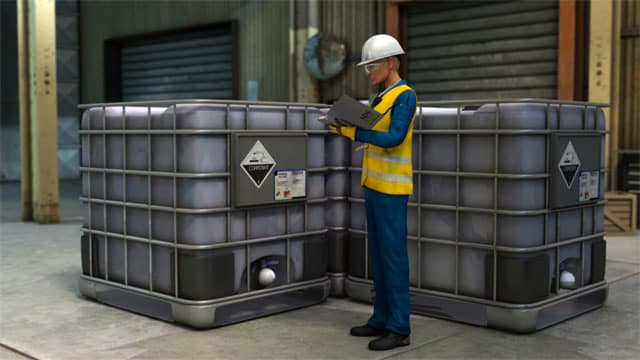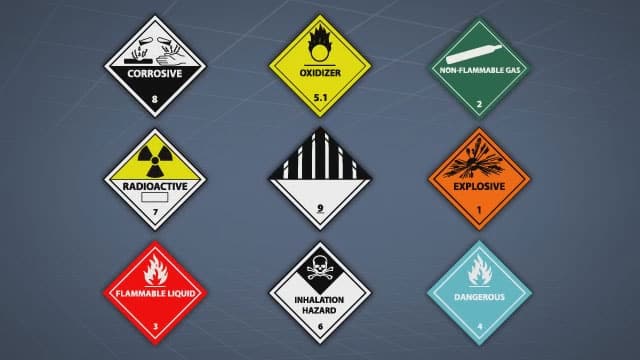



GHS Hazard Communication Training
Many workplaces use hazardous chemicals. However, it’s not always easy to understand the various labeling requirements for the chemicals or the information provided to employees about the hazards these chemicals present. Concern and confusion about these issues increased when OSHA updated its Hazard Communication Standard in 2012. This update was developed so that hazardous communications (HazCom) training would more closely align with the Globally Harmonized System (GHS).
This course provides an overview of the key HazCom issues covered in the OSHA Hazard Communication Standard, including the 2024 revisions to HCS 1920.1200. This course also provides the information that employees need to know about the labeling of hazardous chemicals in all parts of their product cycle.
Request a demoCourse Details
Learning Objectives
- Identify the risks of being exposed to hazardous chemicals at the workplace
- Describe OSHA’s Hazard Communication Standard
- Describe the written hazard control program
- Identify the chemical labeling requirements and common label types
- Describe safety data sheets, also called SDSs
- Identify employee training requirements
Specs
| Course Level | Intermediate |
| Languages | English, Chinese, Spanish |
| Compatibility | Audio, Video |
| Based on: | 29 CFR 1910.1200: Hazard Communication |
Key Questions
Hazard Communication 1994 and Hazard Communication 2012 (Hazard Communication 1994 is being phased out).
OSHA is updating HCS 1910.1200 to align with the seventh revision of the UN’s GHS standard, effective July 19, 2024.
- https://www.osha.gov/hazcom
- https://www.osha.gov/laws-regs/regulations/standardnumber/1910/1910.1200
Hazard Communication Standard 2012 (HCS 2012) integrates the GHS, ensuring standardized communication of chemical hazards through labels and SDS. Key updates include standardized label elements, a uniform SDS format, and enhanced training requirements for workers, improving safety and clarity in the workplace.
What does the 2024 update to OSHA’s HazCom Standard include?Changes to the standard include revisions to:
- Criteria for classification of certain health and physical hazards
- Provisions for updating labels
- Definitions of terms
- As well as new provisions for:
- Labeling small containers
- Trade secrets and technical amendments related to the contents of safety data sheets (SDS)
The Globally Harmonized System of Classification and Labelling of Chemicals (GHS) is a global framework by the United Nations. It standardizes how chemical hazards are classified and labeled, promoting safety in handling and use worldwide. See this page from OSHA for more. www.osha.gov/dsg/hazcom/global.html
What is the purpose of the Hazard Communication standard?To help workers know about the hazards of chemicals in the workplace and promoting safety awareness through proper labeling, training, and access to information such as SDS.
What are the key elements of Hazard Communication 2012?The key elements of Hazard Communication 2012 include standardized classification, labeling with pictograms and hazard statements, SDS, employee training, and a written hazard communication program.
What are the new required GHS-compliant label elements for Hazard Communication 2012?GHS-compliant shipping labels must include a product identifier, supplier identification, precautionary statements, hazard pictograms, signal word, hazard statement. Labels may also include supplemental information.
What are the nine GHS-compliant hazard pictograms?- Health hazard
- Flame,
- Exclamation mark (for “less hazardous” health hazards)
- Gas cylinder (gas under pressure)
- Corrosion
- Exploding bomb (for explosives and self reactives)
- Fame over circle (for oxidizers)
- Skull and crossbones (for acute toxicity)
- Environment (not mandatory for OSHA regulations but other regulators may require it).
Sample Video Transcript
“There are at least three situations where containers of hazardous chemicals may be labeled.
- First, at the manufacturer, before the chemical is shipped. These shipping labels are required by OSHA’s Hazcom Standard and must include elements called for by the alignment of Hazcom with GHS.
- Second, the Department of Transportation or DOT requires labeling elements on the outside container when chemicals are being shipped. These labels are known as DOT Hazardous Material/Dangerous Goods Transportation hazard labels or simple DOT transportation labels.
- And third, when the chemicals have arrived at a workplace the Hazcom standard states that employers may use the original GHS compliance shipping label or any of several alternative workplace labels.”
Additional Resources
- U.S. Department of Labor’s Occupational Safety & Health Administration (OSHA) – www.osha.gov
- OSHA Safety and Health Topics – https://www.osha.gov/hazcom
- OSHA Hazard Communication – https://www.osha.gov/hazcom
- OSHA Publications – https://www.osha.gov/sites/default/files/publications/OSHA3642.pdf
- 29 Code of Federal Regulations (CFR) 1910 – https://www.osha.gov/laws-regs
Course Applies To
Demos + Pricing
Learn more about our courses, get pricing, and see our platform.











